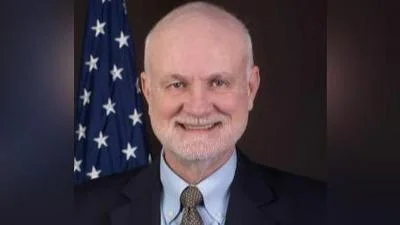City of montague issued the following announcement on Nov 11.
Soon after Alex Chow fell off the edge of a parking garage in Hong Kong, the allegations began spreading online.
Posts circulating in chat groups and on social media claimed the 22-year-old student was chased -- and maybe even pushed -- by police who were clearing protesters with tear gas nearby. Officers blocked an ambulance from reaching Chow, the posts alleged, delaying aid that could have saved his life.
Nevermind that the claims were unsubstantiated, that police denied chasing Chow and that mainstream news outlets, including the South China Morning Post, described the circumstances of his fall as unclear. Hundreds of protesters seized on his Nov. 8 death to engage in clashes with police that resulted in one person being shot on Monday.
As Hong Kong’s anti-government protests stretch into their 23rd straight week, the city is being inundated with online rumors, fake news and propaganda from both sides of the political divide. The polarizing rhetoric is fueling distrust and violence, making it harder to resolve the crisis that has plunged Hong Kong into a recession and raised doubts about the city’s role as Asia’s premier financial hub.
“False information feeds itself to polarize public opinion,” said Masato Kajimoto, an assistant professor at Hong Kong University’s Journalism and Media Studies Centre, who has spent the last seven years studying fake news. “I worry that it reaches a point where reconciliation of this divide is no longer possible.”
Read the latest on Hong Kong’s protests here
While the spread of disinformation has become a growing concern around the world, few places have been as affected in recent weeks as Hong Kong. In the past 24 hours alone, local authorities have denied rumors that they ordered police to fire on protesters at will; planned to cap cash withdrawals from banks; and would use emergency powers to shut financial markets and schools. After one of the most violent days since protests started in June, Hong Kong Chief Executive Carrie Lam urged citizens to “stay calm and see the facts.”
The city’s protests began with largely peaceful demonstrations against the Chinese government’s growing encroachment on Hong Kong’s freedoms. But as factions of the movement have grown more extreme, so too have the narratives spread by both sides.
While protest supporters often demonize the police and the government, pro-establishment camps tend to push narratives describing demonstrators as angry rioters, terrorists and “cockroaches” intent on destabilizing the city and doing the bidding of foreign agents.
The proliferation of questionable information has coincided with waning confidence in once-trusted Hong Kong institutions. Nearly 80% of the public is dissatisfied with the government’s performance, up from 40% a year ago, according to the Hong Kong Public Opinion Research Institute. Just a fifth of the city supports Lam, and only half the population is satisfied with the police force.

 Alerts Sign-up
Alerts Sign-up